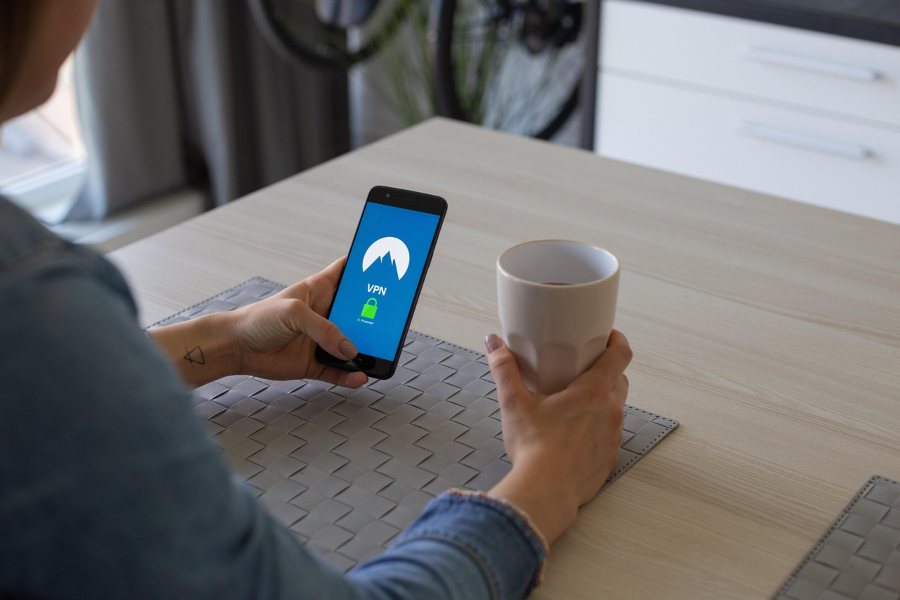
If you’ve ever checked your IP on a coffee-shop Wi-Fi, then switched to mobile data and saw a different number, you’ve asked yourself: do phones have different ip addresses? The short answer is yes—often more than one at the same time. Your smartphone can hold a private address on your local network and appear on the internet with a completely different public address, depending on whether you’re on Wi-Fi or cellular, whether your carrier uses CGNAT, whether IPv6 is enabled, and whether a VPN is active.
Because IPs are assignment-based, not device-engraved, they change as networks change. DHCP leases expire, routers reboot, towers hand you off, and VPN clients route traffic through new exits. That’s why the question “do phones have different ip addresses” keeps popping up for streaming access, app logins, CAPTCHA triggers, and security alerts.
Do phones have different ip addresses? Yes. do phones have different ip addresses across networks and sometimes at the same time? On Wi-Fi, your phone gets a private IP from the router while the router shows a public IP online. On cellular, the carrier assigns another public/CGNAT IP (and often IPv6). Add a VPN and you’ll present yet another public IP. So IPs vary with Wi-Fi vs data, IPv4 vs IPv6, roaming, lease renewals, and VPNs.
Why your phone’s IP changes on Wi-Fi, mobile, and VPN — what it means
People ask, “do phones have different ip addresses?” after seeing a new value on a “What’s my IP” page when switching between Wi-Fi and mobile data. That’s normal: IPs aren’t a property of the phone itself, but of the network path your traffic is using at that moment.
On Wi-Fi, your router’s DHCP gives the phone a private IPv4 (like 192.168.x.x) and often a local IPv6. Those work only inside your home or office network. When you browse the web, the router performs NAT and presents its single public IP to the internet, shared by every device on that Wi-Fi. So yes, do phones have different ip addresses inside the LAN versus what websites see—private internally, public externally.
On mobile data, carriers often assign a public IPv6 plus a CGNAT IPv4. Many users may share one outward IPv4 address while each phone has unique identifiers in the carrier’s core. As sessions move or towers change, your effective public address can shift more frequently than at home.
Turn on a VPN, and you add a third layer: the VPN’s exit server becomes your visible public IP, while your phone keeps its Wi-Fi or cellular addresses. That one tap explains why do phones have different ip addresses in everyday use.
Why phones show different IPs — the sequential anatomy of change
In practice, do phones have different ip addresses because IPs belong to the active network path—Wi-Fi, cellular, or VPN—not to the phone.
Wi-Fi vs. Mobile Data
On Wi-Fi, NAT hides multiple devices behind one public IP, while each phone keeps a private LAN address. On mobile, CGNAT and IPv6 shift egress as towers and routes change.
NAT and CGNAT
Home NAT and carrier-grade NAT both translate private endpoints to fewer public addresses. This conserves IPv4 but ensures your “public IP” can be shared or rotated.
DHCP, Roaming, and Churn
Routers and carriers issue leases with timers. Moving, toggling radios, or roaming to another cell can renew leases and hand you a new IP without breaking sessions.
Dual-Stack Realities
With IPv4 and IPv6 enabled, one app may use IPv6 while another falls back to IPv4. Logs can resemble two users; it’s one device on parallel lanes.
VPNs and Corporate Tunnels
A VPN inserts a tunnel whose exit is your public IP. Disable it, and you revert—explaining why do phones have different ip addresses.
Check and manage your phone’s IPs (public & private) — a practical guide to Wi-Fi, cellular, and VPN addresses
Before the steps, remember: do phones have different ip addresses depending on what you check? Local settings show private/LAN IPs; web tools show public IPs.
- Open a reputable “what’s my IP” page and note IPv4/IPv6. Toggle Wi-Fi ↔ mobile data and refresh; the egress changes—hence why do phones have different ip addresses.
- iOS: Settings → Wi-Fi → (i) on your network; IPv4 (e.g., 192.168.x.x) and IPv6 are local only, not what sites see.
- Android: Settings → Network & Internet → Internet → (gear) → Advanced; listed IPv4/IPv6 are LAN-scoped.
- Cellular: Settings → Mobile Network → Access Point Names; many carriers give global IPv6 plus CGNAT IPv4—two “public” views.
- VPN test: connect, recheck, then disconnect; your public IP flips to the VPN exit and back, sometimes prompting login checks.
- Lease routine: log Wi-Fi private/public IPs → switch to cellular and recheck → forget/rejoin Wi-Fi to renew DHCP → compare.
- Stability: request a static home IP, prefer stable IPv6, avoid needless VPN hopping, and keep sane DHCP leases.
- Developers: log both families (with consent), avoid IP-only bans, and set rate limits tolerant of NAT pools.
When phones change IPs—triggers, timing, and what you can control
Phones change IPs because networks are dynamic. You move between access points and towers; hardware saves power by sleeping radios; leases renew on schedules you don’t see. Each event can rotate addresses. On Wi-Fi, the router’s DHCP grants a time-boxed lease. If you leave home for a day, another device may reclaim your old slot. When you return, the router may hand your phone a different private address. Outside, the public IP can change any time your ISP or carrier adjusts upstream routing. Carriers routinely rebalance pools, so your apparent address can shift without warning.
Roaming triggers handovers. As you walk, your phone measures signal quality and hops between cell sectors. The data session persists, but underlying paths and egress points may change. With dual-stack, the IPv6 path might remain stable while IPv4 re-maps through CGNAT. That’s why a gaming session might feel steady while a web check shows a new IPv4. Add a VPN, and you control one variable: your public IP equals the VPN exit. If you stick to one region and keep the client connected, your visible address stabilizes, even though local Wi-Fi or cellular details still change under the hood.
Real-World Implications of Wi-Fi vs Mobile IPs
Since IPs belong to the network path, not the device, moving between Wi-Fi, mobile data, or a VPN can instantly change the address services see. Here’s how that shift affects streaming, logins, work apps, parental controls, and on-the-road debugging.
Streaming and region locks
Streaming apps compare IP geography to catalog rules. A switch from home Wi-Fi to 5G can change region hints. If the app revalidates licenses, you may see a brief error until it rechecks.
Login security, MFA, and fraud engines
Banks and platforms treat sudden IP changes as a risk. Rapid flips from a home broadband IP to a distant VPN may push extra verification. Stability helps: avoid mid-session network switches.
Work VPNs and corporate SaaS
Corporate VPNs present a fixed egress. Admins often allowlist that IP for dashboards. Off the tunnel, your address looks unrecognized, and access narrows. That’s expected behavior, not a bug.
Parental controls and home policies
Some control keys are off the router’s public IP. Kids moving from Wi-Fi to cellular bypass those policies because the cellular egress is different. Router-level rules don’t extend to the carrier core.
Debugging “it works on Wi-Fi but not on data”
Cellular networks commonly block certain inbound ports and mDNS/SMB. An app that relies on LAN discovery works at home but fails on the road. The differing IP environments explain the split.
Bottom Line
Phones don’t carry a single, permanent online identity. They adopt addresses from the networks they join and from the tunnels they create. That’s why the question do phones have different ip addresses matters daily for login security, streaming, and app reliability. Once you view IPs as dynamic labels—private on the LAN, public on the egress, sometimes dual-stack, sometimes tunneled—you’ll predict changes, design for resilience, and stop fighting the internet’s plumbing.
FAQ’s
Why does my public IP change during the day?
Leases renew, routes shift, towers hand you off, and VPNs toggle. Any of these rotates the apparent egress address without you doing anything “wrong.”
Can my phone have two IPs at once?
Absolutely. Dual-stack gives you IPv4 and IPv6 simultaneously. You can also hold a Wi-Fi private IP and a cellular stack standing by.
How do I find both my private and public IPs?
Check the Wi-Fi details page for private IPs, and use a web-based IP checker for public IPv4/IPv6. Compare results on Wi-Fi vs cellular and with/without a VPN.
Will a VPN stop my IP from changing?
It stabilizes the public egress (the VPN exit) as long as you stay connected to one region. Your local/LAN or cellular details may still rotate underneath.
How do apps and sites cope with IP variability?
Well-designed systems don’t trust IP alone. They combine tokens, MFA, and behavior models, and they log IPv4/IPv6 separately to reduce false flags.





